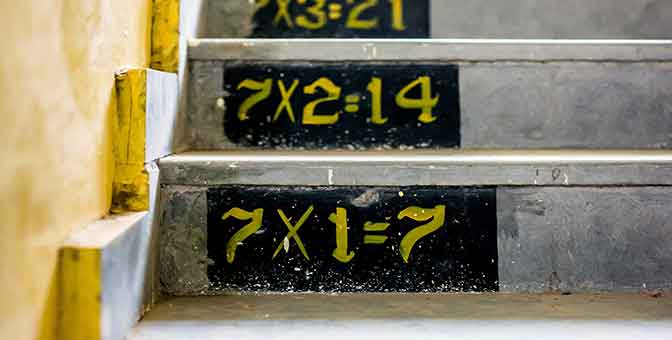
Still Using GPR for Pricing Decisions? Here’s the Math
In a past blog, we reviewed the definition of Gross Potential Revenue (GPR) and how it provides useful information for evaluating investment decisions. We also highlighted how GPR can provide misleading information when used to support pricing decisions. Here, we present a detailed example of why and how GPR should not be used for pricing.
We believe the guidance provided here to be important, as many self-storage operators use GPR for pricing decisions; often, their pursuit of a high GPR actually results in lower revenues and profits.
Let’s say we have a self-storage unit group of 100 units. Assume, for simplicity, all current customers are paying $95/month rent. The unit group is 92% occupied. The current “street” or asking rate for new customers is $100.
- GPR = 100 units x $100/unit = $10,000.
- Actual Monthly Revenue = 100 units x 92% x $95/unit = $8,740.
Although there can be variations in the way GPR is computed, a fairly common way is to assume 100% occupancy at the current asking rate.
Now, over the course of the year, demand typically has seasonal patterns often increasing in the spring and softening in the fall. Moreover, the highest occupancies at a facility are often just prior to the time at which demand softens. With reduced demand, we have two responses:
- Proactive Response to Softened Demand. We anticipate the lower demand by lowering move-in rates. With lower move-in rates, actual move-ins may be greater than would otherwise be the case if rates were left unchanged (or increased)
- Maintain or Increase GPR in Recognition of High Occupancy. We maintain current prices or increase them, in order to maintain or increase the GPR. As occupancy rates are very high, this seems like the correct action if we are focused on GPR: if we reduce prices when we are highly occupied, and our GPR decreases, our ownership group might wonder what we are doing and why!
Response 1: Proactive Response to Softened Demand.
As we move into the slower months of the year, suppose we reduce our street rate to $90. Furthermore, suppose we have 10 move-outs and 7 move-ins, resulting in an occupancy rate of 89%.
- GPR = 100 units x $90/unit = $9,000. (A reduction of 10%.)
- Actual Monthly Revenue = 82 units x $95/unit + 7 new move-in units x $90/unit = $8,420.
Response 2: Maintain or Increase GPR in Recognition of High Occupancy.
Suppose we maintain our move-in price at $100 per month. The 10 move-outs occur, but we only obtain 5 move-ins, resulting in an occupancy of 87%.
- GPR = 100 units x $100/unit = $10,000.
- Actual Monthly Revenue = 82 units x $95/unit + 5 new move-in units x $100/unit = $8,290.
Or, perhaps we increase our move-in price to $110 per month. Although the 10 move-outs still occur, perhaps we still obtain 5 move-ins, again resulting in an occupancy of 87%.
- GPR = 100 units x $110/unit = $11,000.
- Actual Monthly Revenue = 82 units x $95/unit + 5 new move-in units x $110/unit = $8,340.
Maintaining or Increasing GPR when occupancy is high but demand is about to soften, typically yields lower actual revenues, compared to proactively lowering move-in rents.
So, for the benefit of not having to explain to the ownership group why GPR is lower when occupancies are at their highest, you get: An actual monthly revenue of $8,290 that is 1.5% lower than that of the lower move-in price (and GPR) result; or perhaps revenue of $8,340 and a revenue reduction of only 1%.
Of course, at the lower occupancy, it will then seem more natural to lower prices and accept a lower GPR. You may think you have taken the right action by waiting to reduce prices, but you lose a revenue opportunity, which is compounded because the additional move-ins that resulted from the lower move-in rates continue to pay rent for each month they stay!
Also keep in mind that the lowered GPR is temporary; it will increase as demand increases and market demand allows you to adjust your prices upward.
Although the above example may seem a bit simplistic, it often does reflect reality quite well. Yes, in the real world more factors are at play. This is where a disciplined approach of data collection, analysis, and execution are key. A self-storage revenue management system can greatly help facilitate the pricing process to maximize revenues, rather than GPR. And that should please your ownership group when they take the results to the bank.
Special thanks to co-author Kevin Bowman, Managing Director, Revenue Management at StorageMart. Based in Columbia, MO, StorageMart operates over 200 facilities in the US, Canada, and UK.
